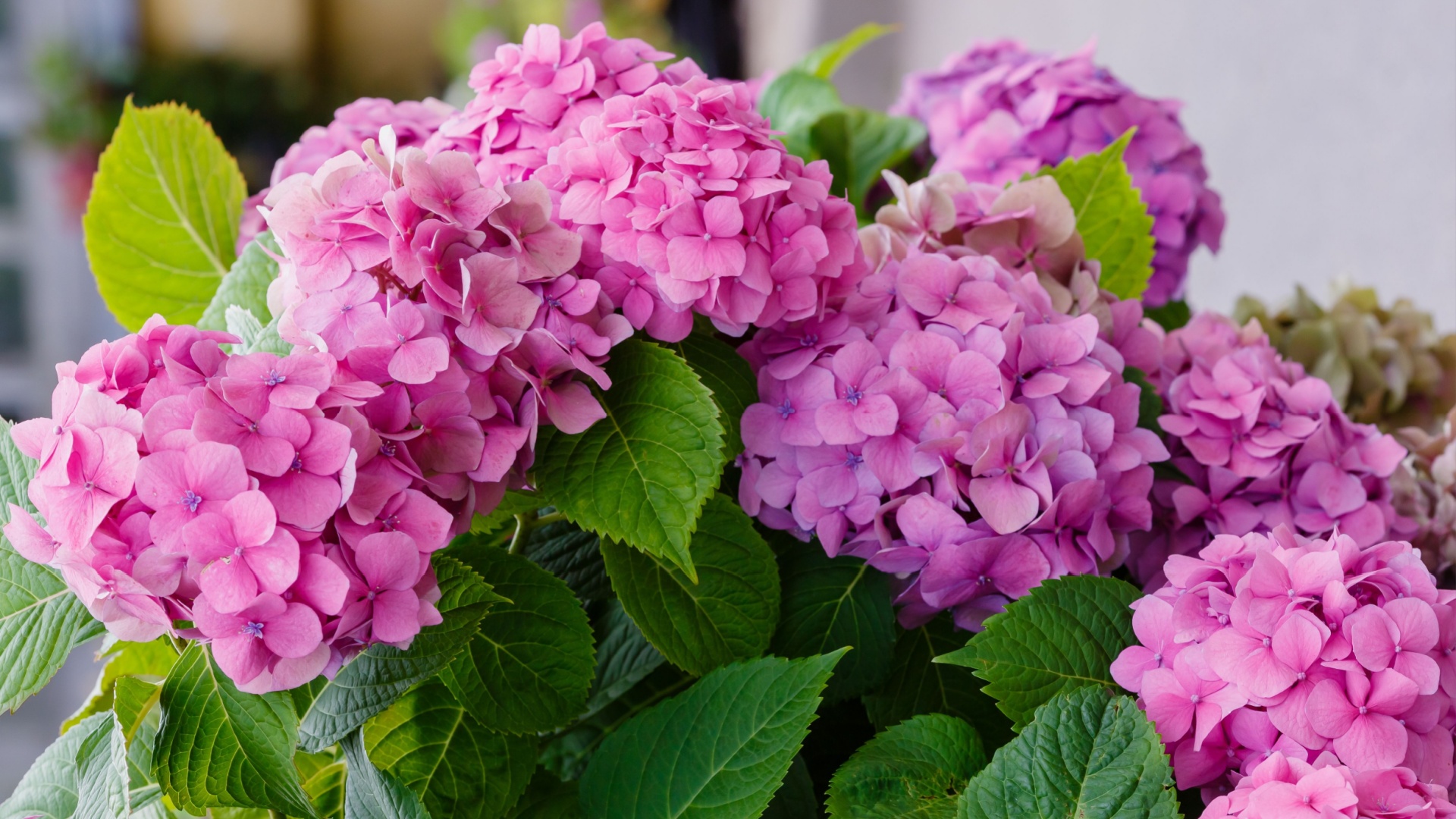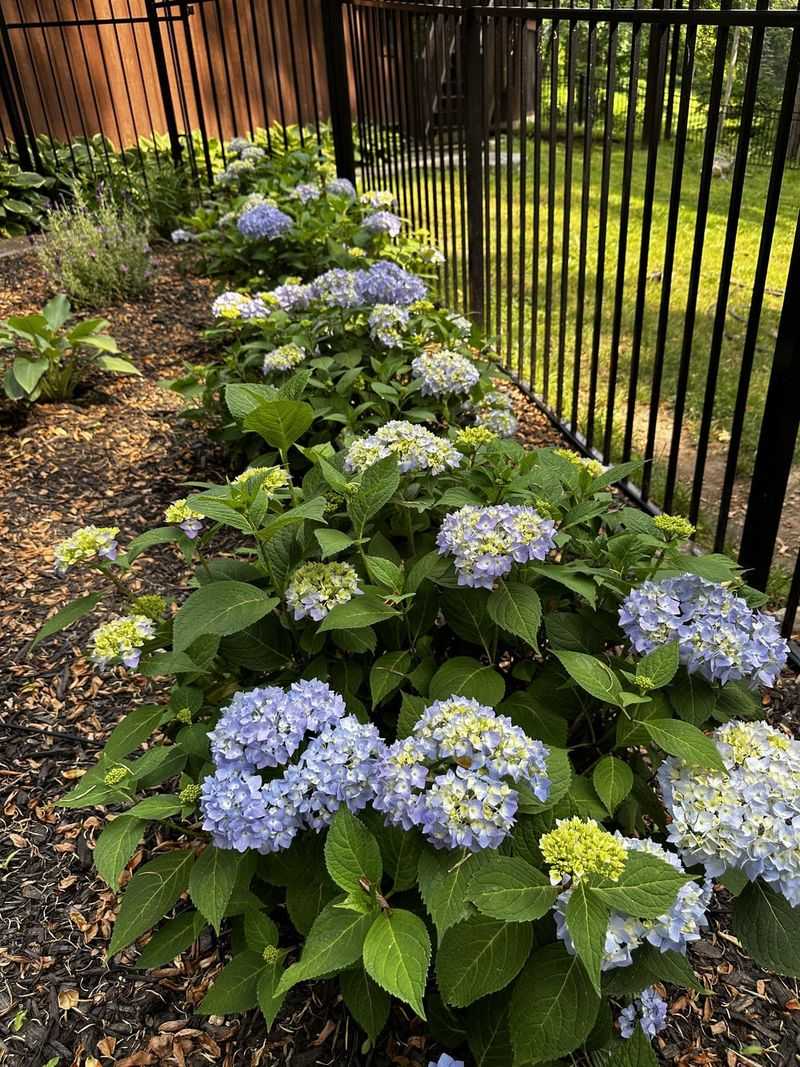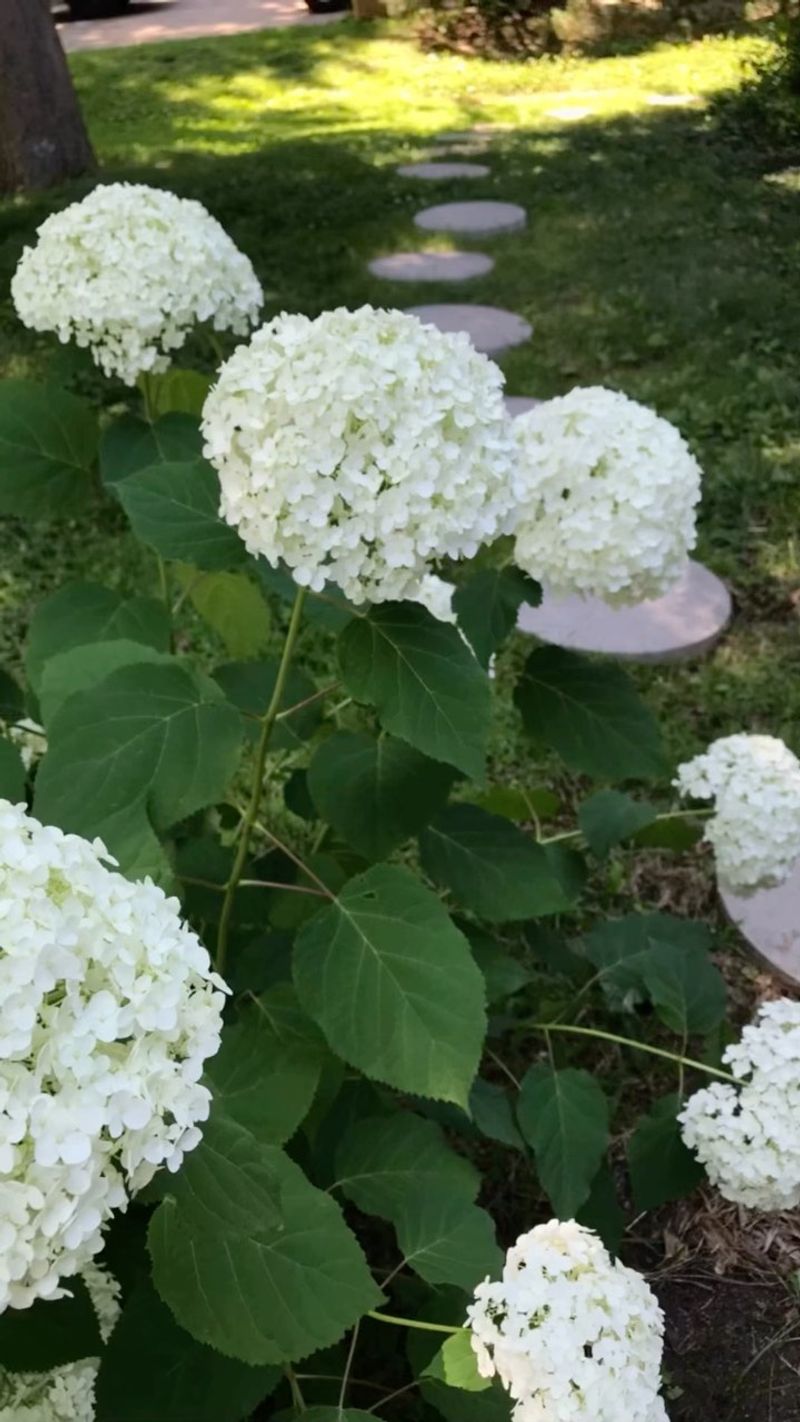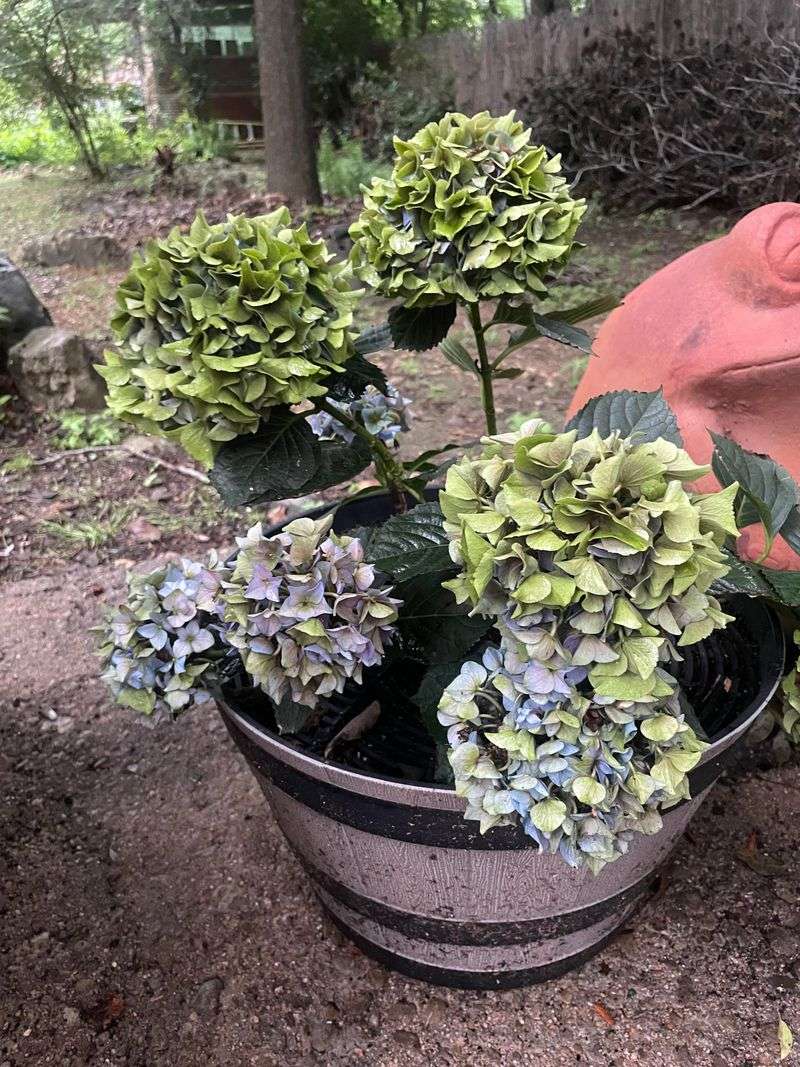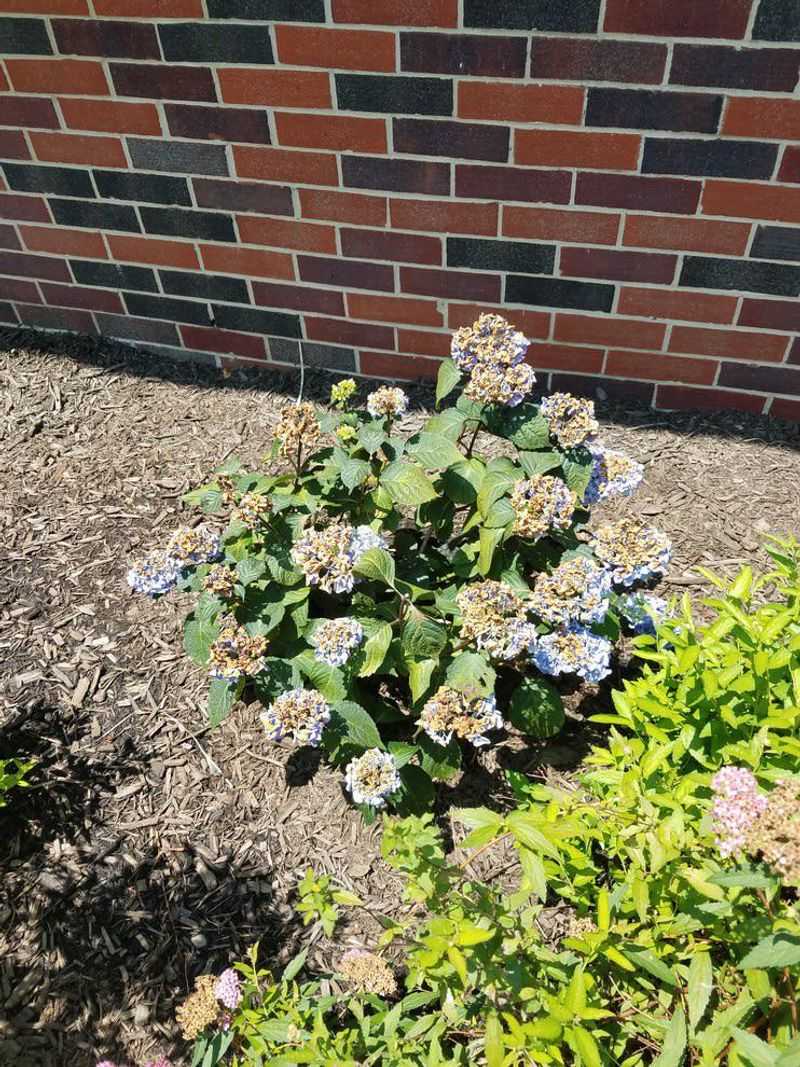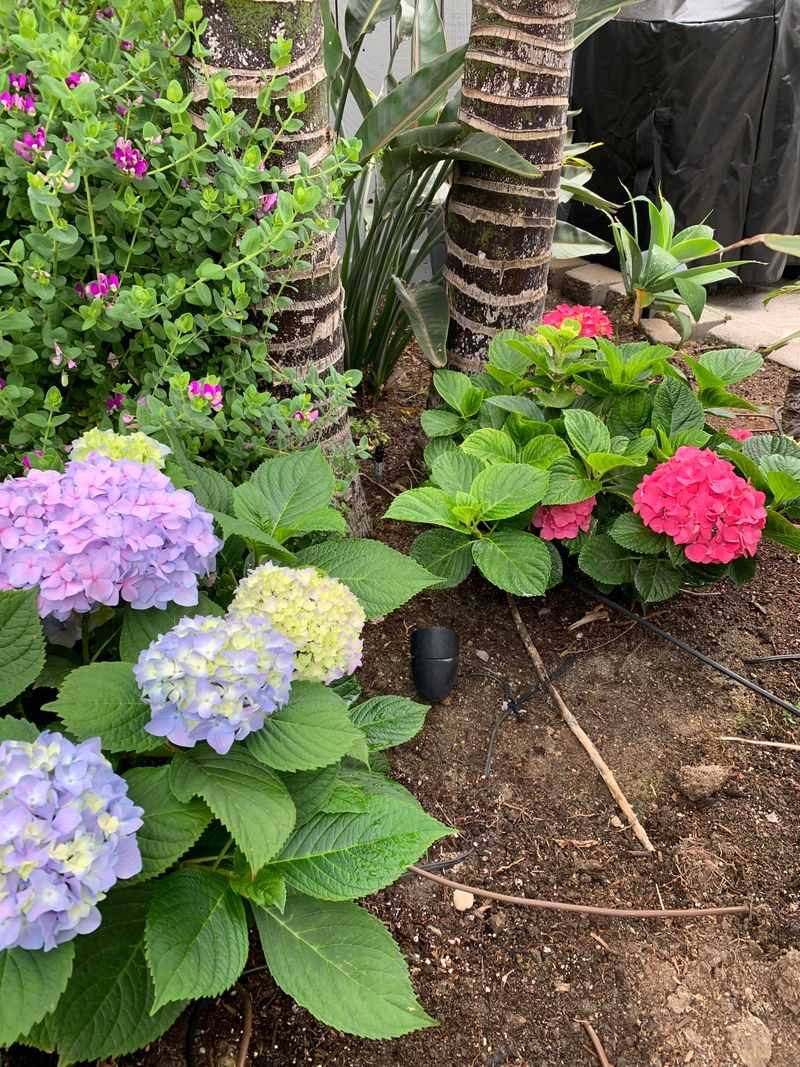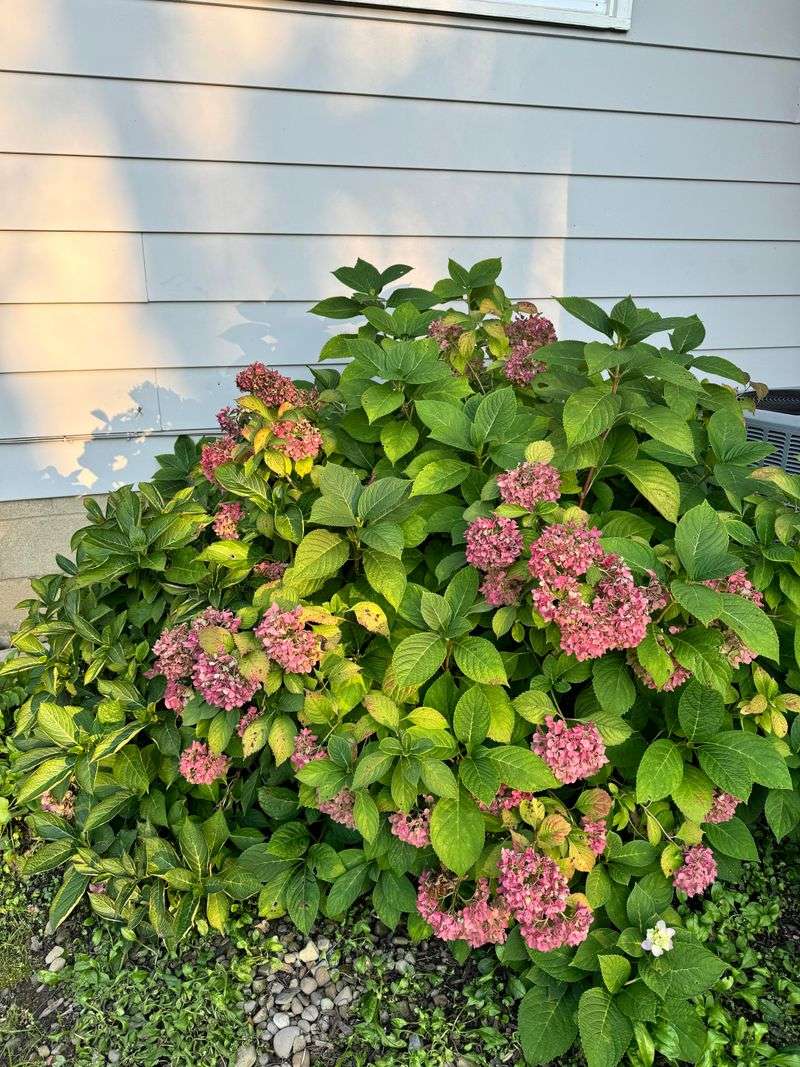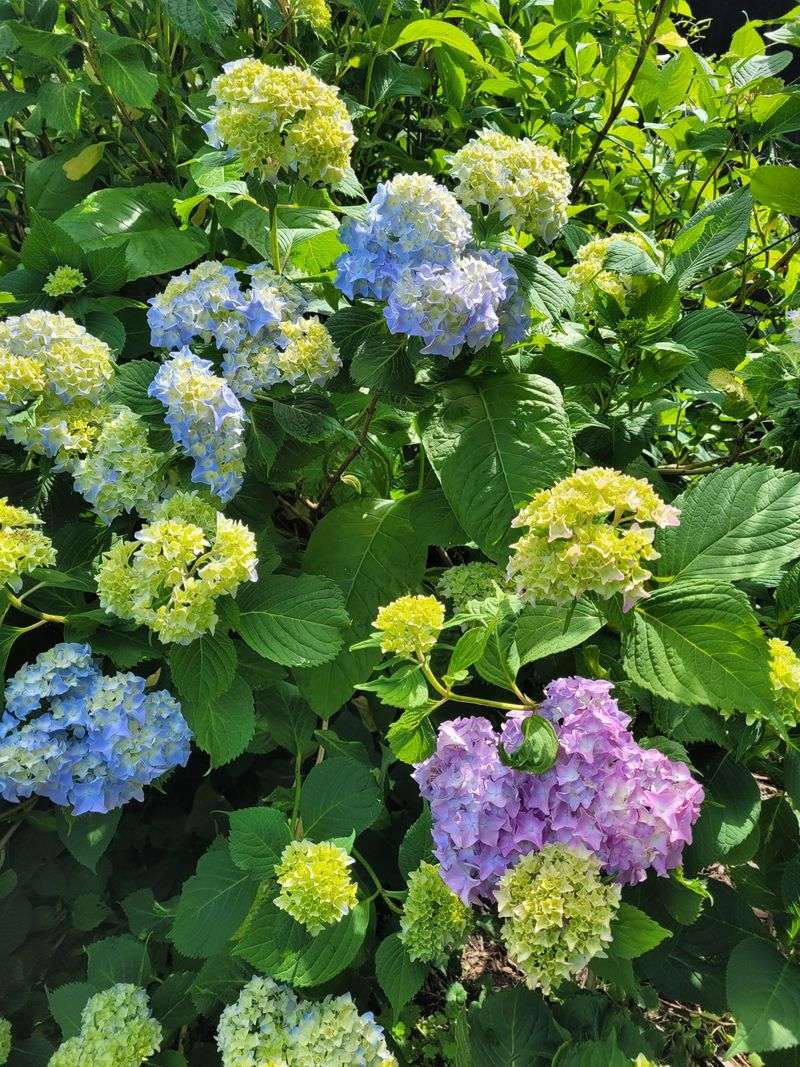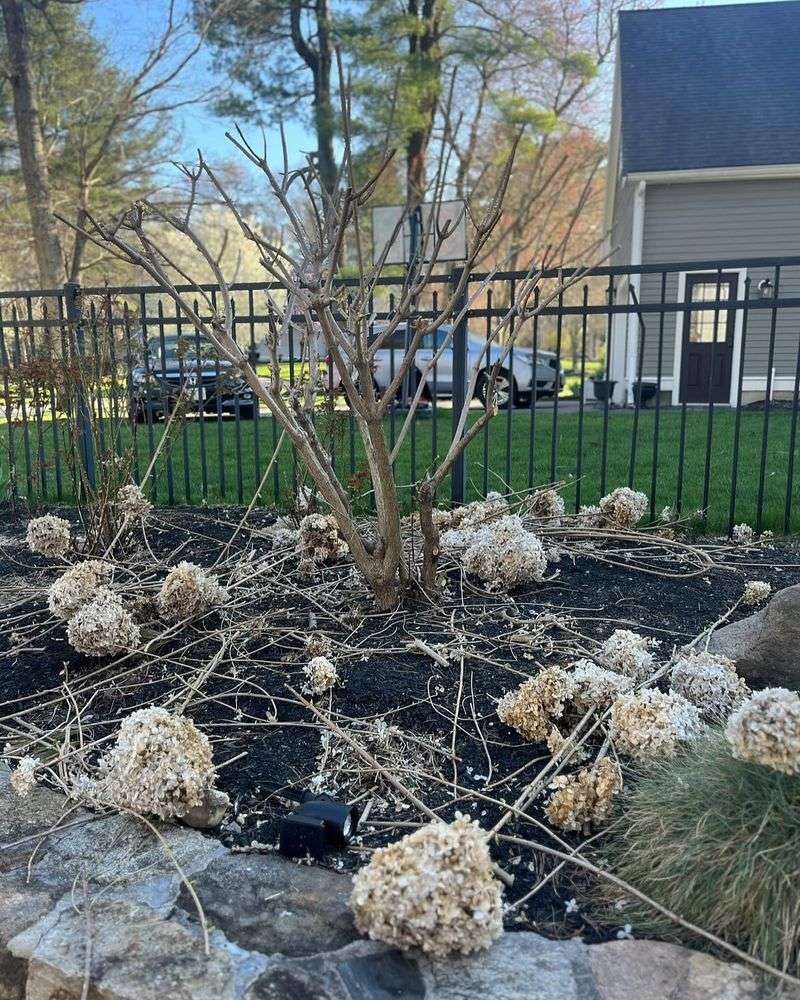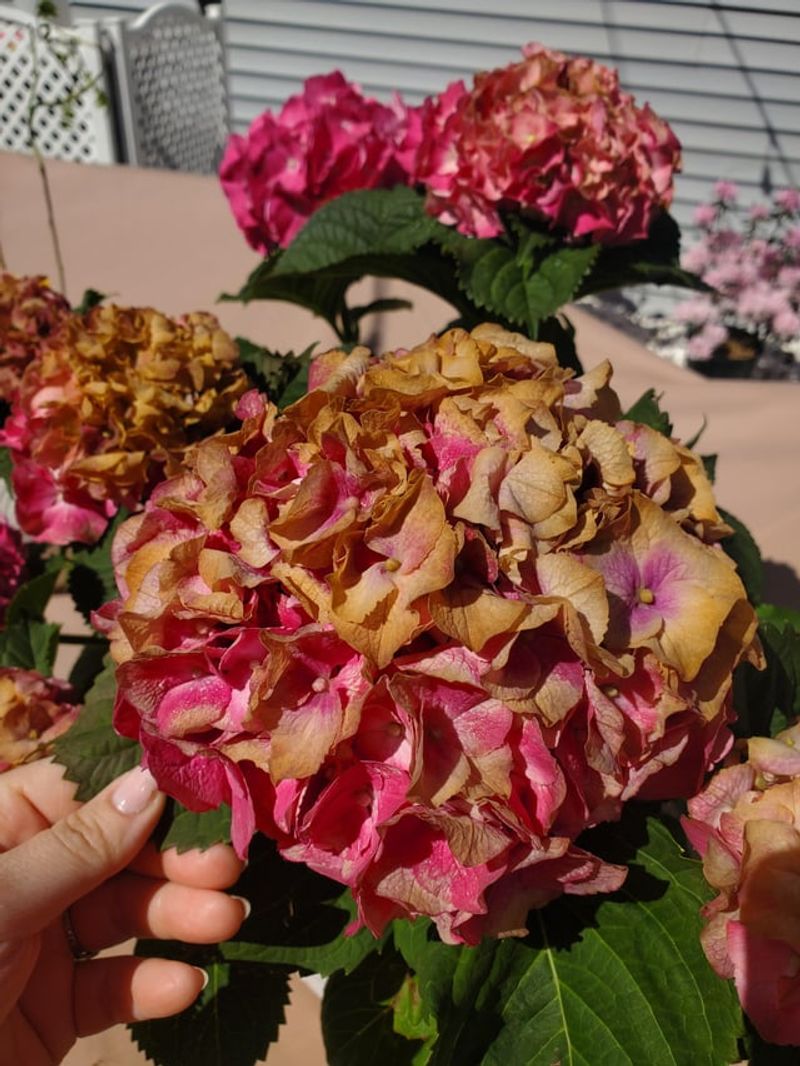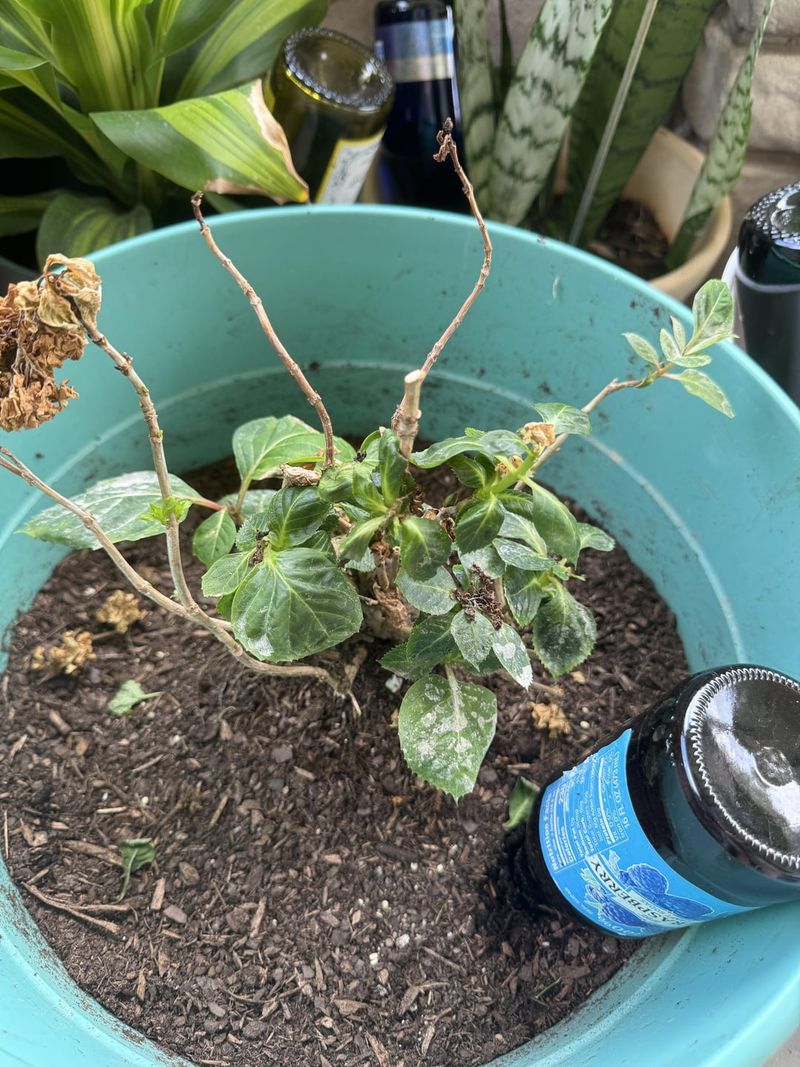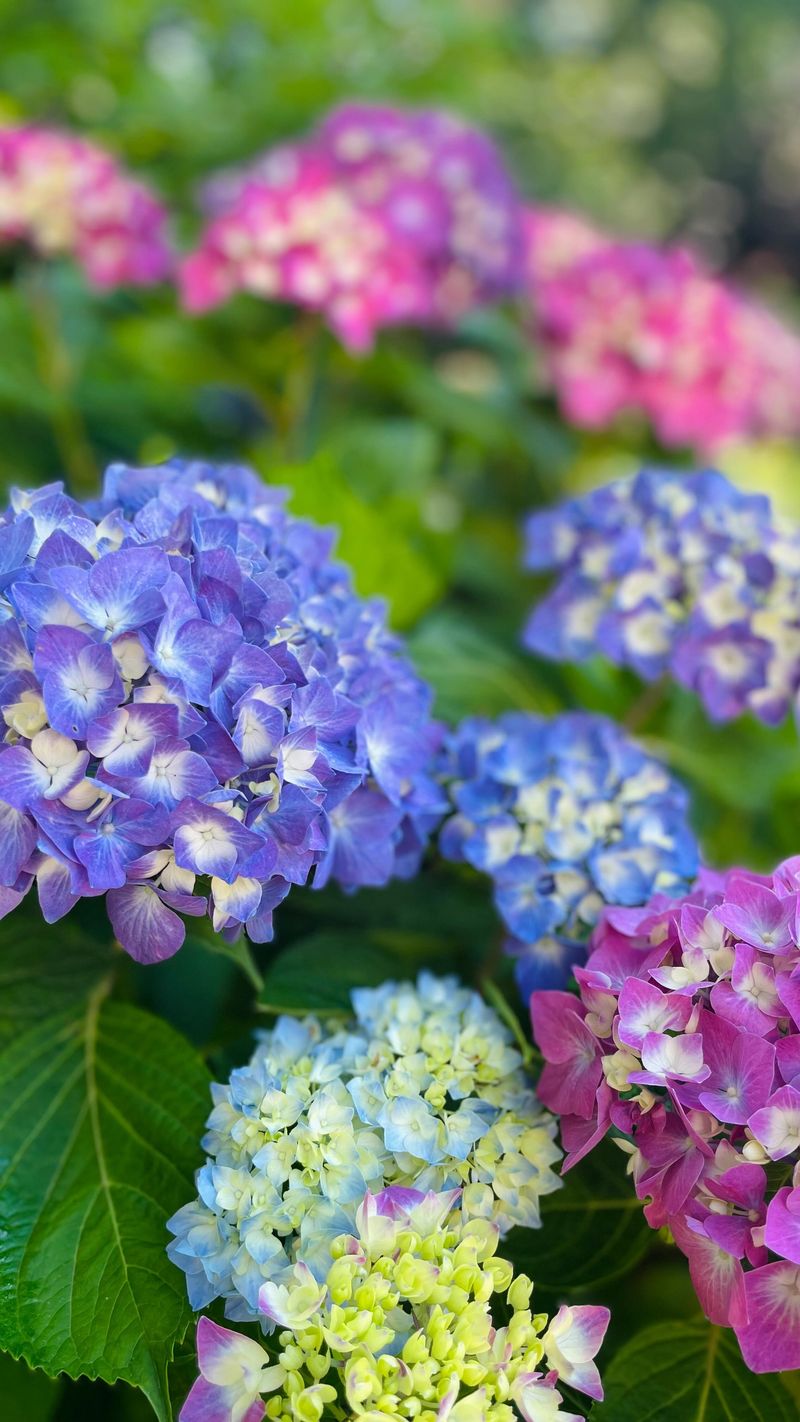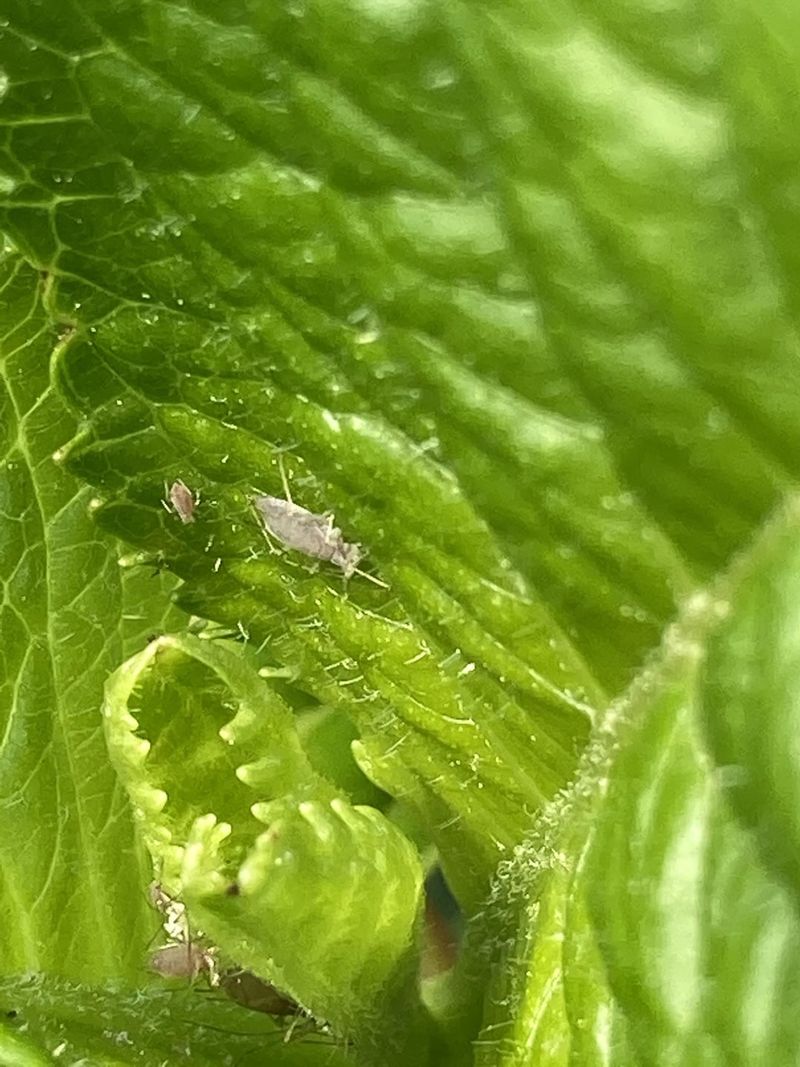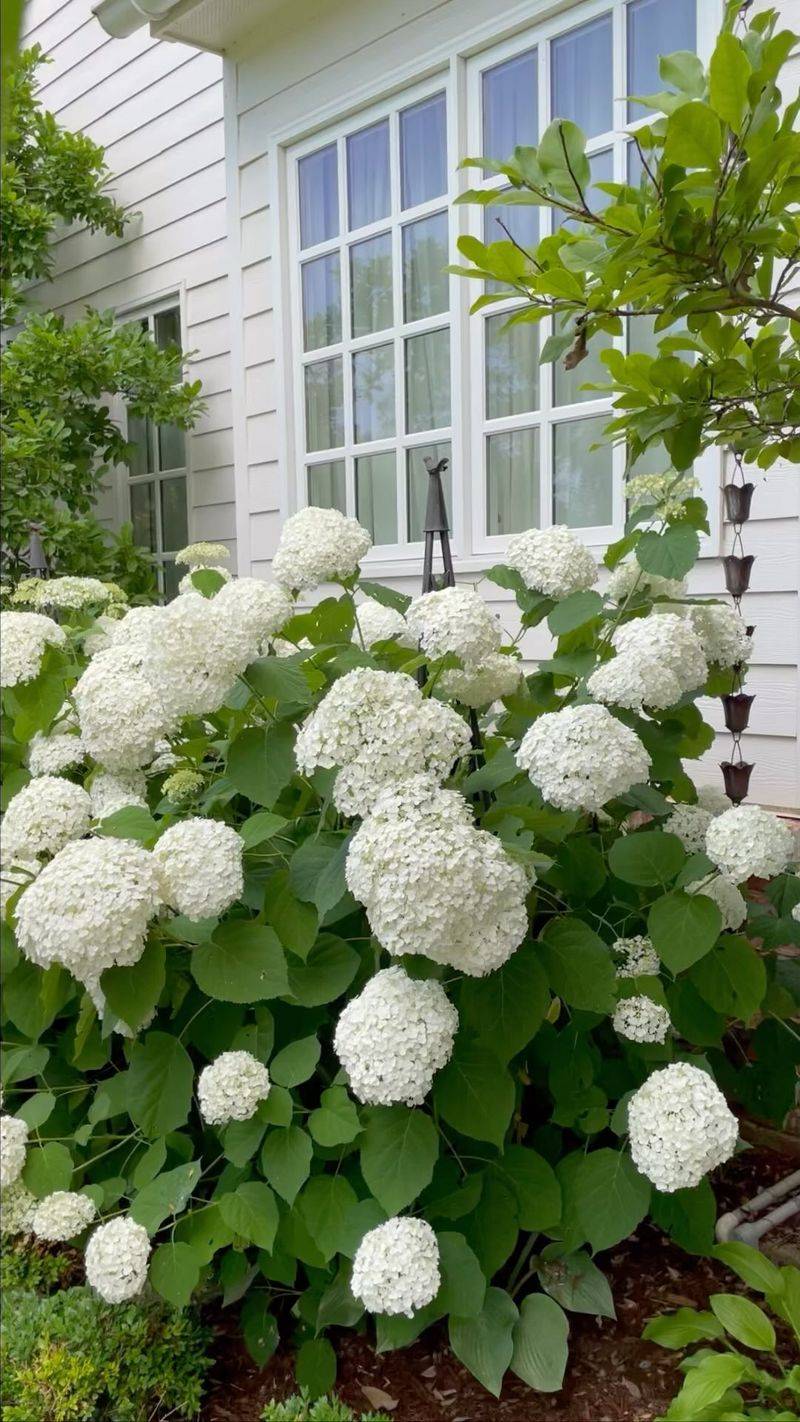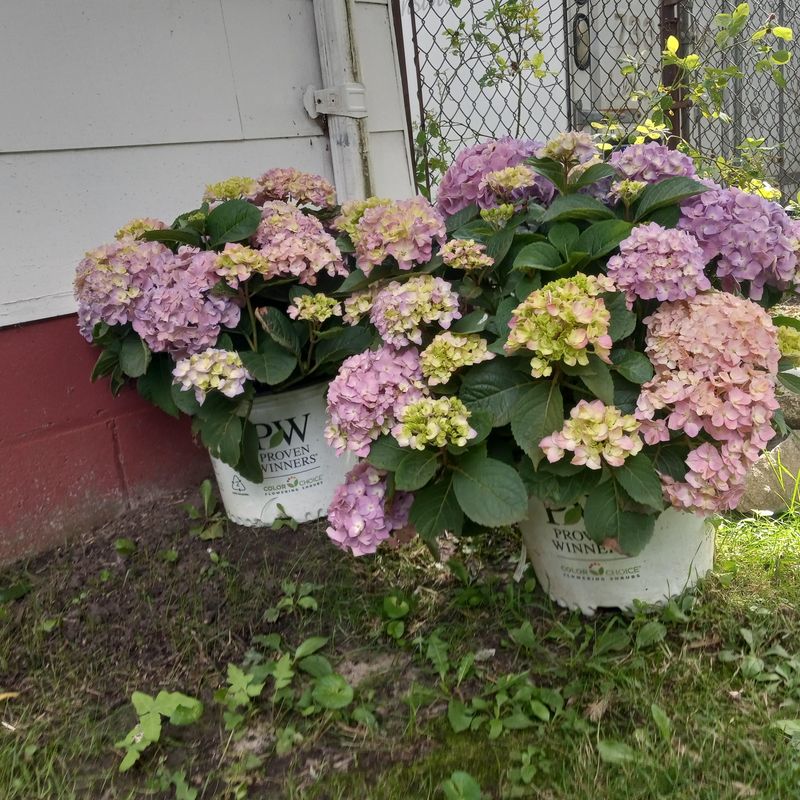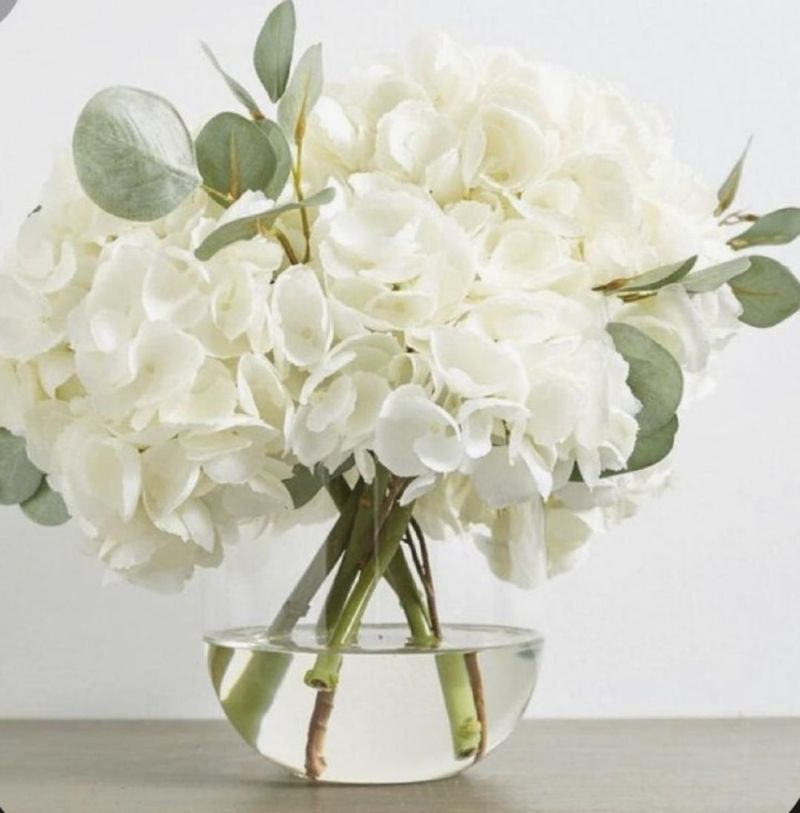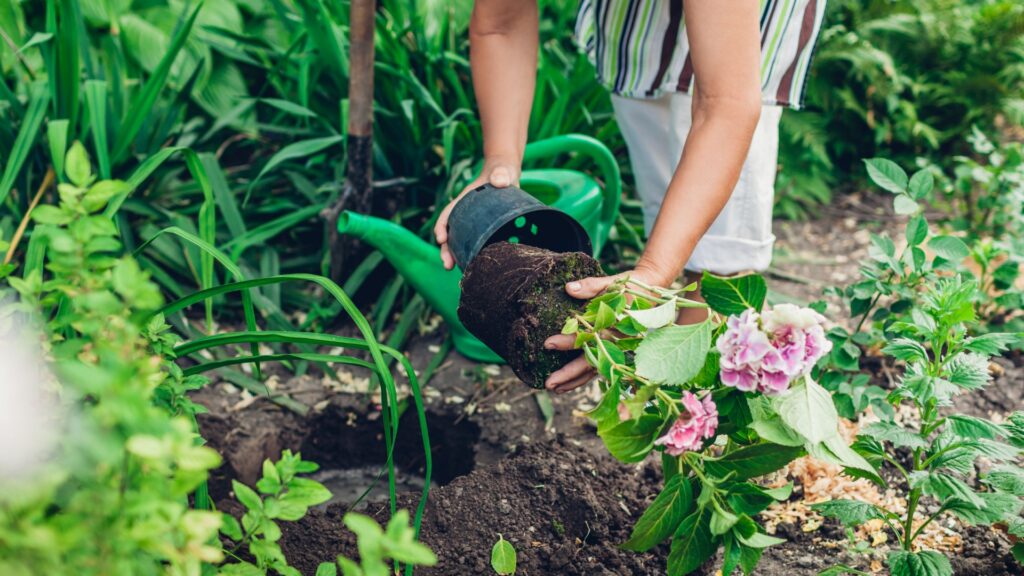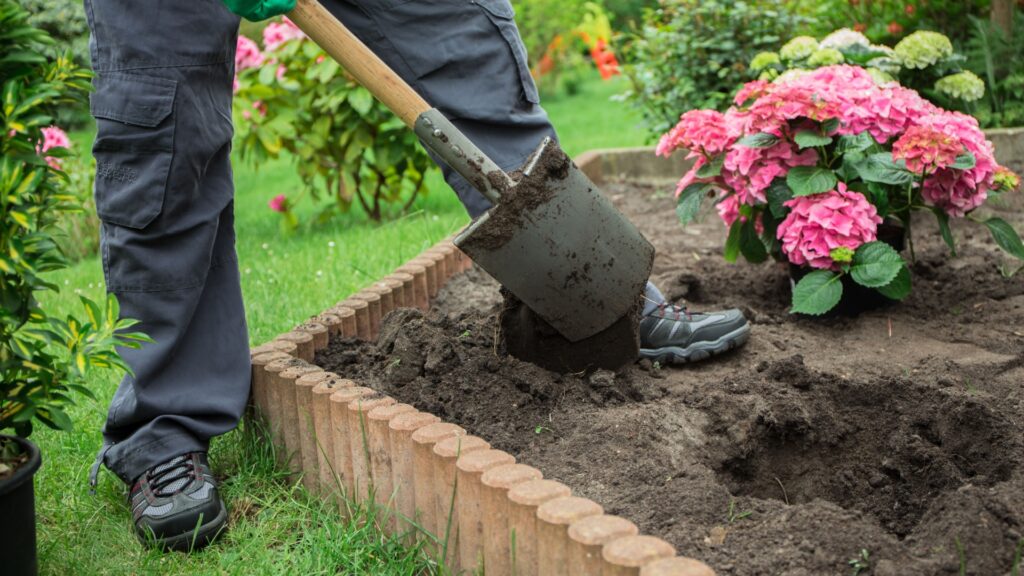Hydrangeas are the drama queens of the garden—big, bold, and breathtaking. But keeping those fabulous blooms front and center? That takes a little insider know-how. These 20 brilliant tips will help you maximize your flower power and keep your shrubs putting on a jaw-dropping performance.
From clever watering hacks to pruning like a pro, it’s all about working with your hydrangeas—not against them. One wrong move can mean a season without blooms.
Ready to make your hydrangeas the star of the garden? Let’s dig into the golden rules—and blooming blunders—you need to know.
1. Choose the Right Location
Morning sunshine with afternoon shade creates the perfect balance for these flowering beauties. Hydrangeas thrive in this light pattern, protecting their delicate petals from intense midday rays while giving them enough brightness to produce abundant blooms.
Too much shade leads to fewer flowers, while excessive sun causes wilting and stress. Finding that sweet spot—typically an east-facing location—provides the ideal environment for these showstoppers to develop their magnificent flower heads and maintain them for weeks on end.
2. Water Properly and Consistently
Deep, thorough soaking at the base beats frequent shallow sprinkles every time. Hydrangeas develop deeper, more resilient root systems when watered this way, helping them withstand both hot spells and flowering demands.
Aim for about 1 inch of water weekly, adjusting for rainfall and temperature. These moisture-loving plants have their name for good reason—’hydra’ means water—but soggy conditions can lead to root rot, so ensure good drainage while maintaining consistent soil moisture, especially during blooming periods.
3. Mulch to Retain Moisture
A generous 2-3 inch layer of organic mulch works wonders for flower production and longevity. This protective blanket keeps roots cool, conserves crucial moisture, and slowly releases nutrients as it breaks down, all factors that encourage hydrangeas to bloom their hearts out.
Wood chips, pine straw, or shredded leaves make excellent choices for these thirsty bloomers. Remember to keep the mulch slightly away from the stems to prevent rot issues, while extending it out to the drip line where feeder roots actively absorb water and nutrients.
4. Fertilize at the Right Time
Early spring applications give these flowering shrubs the nutritional boost they need when it matters most. Hydrangeas benefit from a balanced, slow-release fertilizer (like 10-10-10) just as new growth begins, supporting the development of strong stems and abundant flower buds.
Avoid late-summer feeding which stimulates tender new growth vulnerable to winter damage. A second light application after the first flowering can encourage reblooming varieties to produce another show, but always follow package directions to prevent fertilizer burn that can damage these sensitive plants.
5. Prune According to Variety
Knowing whether your bushes bloom on old or new wood makes all the difference between abundant flowers and disappointment. Old-wood bloomers like bigleaf and oakleaf hydrangeas form their flower buds in late summer for the following year, so pruning them after midsummer removes next year’s show.
New-wood varieties like ‘Annabelle’ and panicle hydrangeas develop flowers on current-season growth, allowing for early spring pruning. When in doubt, simply remove only dead or crossing branches, and save major pruning until you’ve identified your specific type to avoid accidentally removing potential blooms.
6. Deadhead Spent Blooms
Snipping away faded flowers redirects the plant’s energy toward producing new blooms rather than developing seeds. This simple maintenance task can significantly extend the flowering period, especially for reblooming varieties that can produce multiple flushes of flowers throughout the season.
Make cuts just above the first set of healthy leaves beneath the spent flower head. For varieties that bloom on old wood, stop deadheading by mid-August to allow any late-season flowers to develop into buds for next year’s early display, giving you the best of both worlds.
7. Protect from Afternoon Heat
Scorching summer afternoons can cause rapid wilting and premature bloom decline even in well-watered gardens. Hydrangeas prefer moderate temperatures and will respond to heat stress by shutting down flower production and focusing on survival instead of creating those showy blooms we love.
Consider creating temporary shade with umbrellas or shade cloth on the hottest days. For permanent plantings, positioning hydrangeas where they receive protection from buildings or taller trees during intense afternoon sun preserves flower quality and extends their showy display by several weeks.
8. Adjust Soil pH for Color Control
Creating your preferred flower color is possible with a simple understanding of soil chemistry. Hydrangeas (particularly the bigleaf varieties) produce blue flowers in acidic soil (pH 5.5 or lower) and pink blooms in alkaline conditions (pH 6.5 or higher), giving gardeners a unique opportunity to customize their garden palette.
Add aluminum sulfate to acidify soil for blue flowers or garden lime to alkalify for pink blooms. These amendments should be applied gradually over several months, as dramatic pH changes can stress plants and reduce flowering. White varieties, however, stay stubbornly white regardless of soil conditions.
9. Provide Winter Protection
Wrapping vulnerable varieties in burlap or surrounding them with wire cages filled with leaves prevents winter damage to precious flower buds. This protection is especially crucial for bigleaf hydrangeas in zones 4-6, where harsh winter conditions can kill the stems and buds that would produce next season’s early flowers.
Leave the protection in place until after the last spring frost has passed. Even with winter die-back, the roots typically survive, but you’ll miss out on early-season blooms if buds are damaged, making this simple winter protection well worth the effort for spectacular flowering performance.
10. Avoid Late Fertilization
Late-season feeding stimulates tender new growth that won’t have time to harden off before winter arrives. This ill-timed growth spurt makes hydrangeas vulnerable to winter damage and diverts energy away from flower bud formation, directly impacting next year’s blooming potential.
Cut off all fertilization by mid-July in most regions. If your plants need a boost after their first flowering, choose a low-nitrogen formula (like 5-10-10) that encourages blooming rather than leafy growth, helping the plant focus on what matters most—those gorgeous flower heads we all want more of.
11. Never Prune in Late Fall or Winter
Timing mistakes with pruning shears lead to the disappointing “healthy plant, no flowers” syndrome that frustrates many gardeners. Late-season pruning removes the flower buds already formed on old-wood hydrangeas, essentially cutting off next year’s blooms before they have a chance to develop.
Reserve major pruning for just after flowering on old-wood types, or early spring for new-wood bloomers. If you’re unsure which type you have, follow the conservative approach of only removing dead wood until you’ve observed a full growing cycle to determine your variety’s blooming pattern.
12. Don’t Overwater
Soggy soil conditions lead to root rot and reduced flowering even in these moisture-loving plants. Despite their name suggesting water needs (“hydra” means water), hydrangeas prefer consistently moist but well-drained soil rather than wet feet that can suffocate roots and invite fungal diseases.
Check soil moisture before watering by inserting your finger 2 inches into the soil. If it feels damp, wait another day before watering. Yellowing leaves often signal overwatering rather than underwatering, especially if accompanied by wilting that doesn’t improve after irrigation—a key difference from drought stress.
13. Apply Compost Annually
A yearly layer of rich compost provides slow-release nutrients that support spectacular blooming without the risk of fertilizer burn. This natural approach improves soil structure, increases beneficial microbial activity, and enhances the soil’s ability to retain moisture while still draining well—creating ideal growing conditions.
Spread a 1-inch layer of finished compost around the drip line in early spring. Avoid piling compost against the stems, which can cause rot issues. This annual addition of organic matter creates the perfect growing environment for hydrangeas to produce their magnificent blooms year after year.
14. Consider Reblooming Varieties
Modern breeding breakthroughs have created impressive varieties that flower on both old and new wood, dramatically extending the blooming season. Cultivars like ‘Endless Summer’, ‘BloomStruck’, and ‘Penny Mac’ offer the best of both worlds—early flowers from last year’s growth plus new blooms on current-season stems.
These reblooming hydrangeas provide flowers from early summer through fall, often until frost. Even if winter damage kills old stems, these resilient plants will still flower on new growth, making them especially valuable in colder regions where traditional bigleaf hydrangeas struggle to produce reliable blooms each year.
15. Prevent Pest Problems Early
Regular inspection catches potential troublemakers before they can damage flower buds or stress the plant. Common hydrangea pests include aphids, spider mites, and Japanese beetles, all of which can reduce flowering if left unchecked during the critical bud development stage.
A strong spray of water often dislodges minor infestations without chemicals. For persistent problems, insecticidal soap provides effective control with minimal environmental impact. Healthy, properly-sited plants naturally resist pest pressure, so maintaining optimal growing conditions remains your best first line of defense against bloom-reducing pests.
16. Provide Support for Heavy Blooms
Those magnificent flower heads can become so large they cause stems to bend or break, especially after rain. Supporting stems with discrete stakes or a circular plant support preserves the natural beauty while preventing damage that can cut short the blooming display.
Install supports early in the season before they’re needed. This allows the plant to grow through and around the support, naturally concealing it with foliage. For established plants with particularly heavy blooms, individual stem supports work better than cage-type supports, allowing you to protect just the stems that need assistance.
17. Avoid Excessive Nitrogen
Lush green growth comes at the expense of flowers when nitrogen levels are too high. High-nitrogen fertilizers or lawn fertilizer overspray can create beautiful foliage but few blooms, as the plant diverts energy to leaf production rather than developing flower buds.
Choose balanced or bloom-boosting fertilizers with higher phosphorus content (the middle number in the N-P-K ratio). Products marketed specifically for flowering shrubs or acid-loving plants typically provide the right nutrient balance to encourage maximum blooming without excessive leafy growth that competes with flower production.
18. Harvest Blooms Strategically
Cutting flowers for arrangements can actually stimulate more blooming when done correctly. Taking blooms from reblooming varieties encourages the plant to produce additional flowers, similar to the benefits of deadheading but with the bonus of beautiful indoor arrangements.
Cut in the morning when stems are fully hydrated, selecting flowers that are fully developed but not yet fading. Make clean cuts just above leaf nodes where new growth will emerge. Limit harvesting to no more than one-third of the flowers at once to maintain the plant’s health and ensure continuous garden display.
19. Space Plants for Airflow
Crowded hydrangeas may look lush, but limited air circulation invites fungal diseases that can damage leaves and reduce bloom production. Powdery mildew, leaf spot, and botrytis thrive in stagnant, humid conditions—especially when foliage stays damp after watering or rain.
When planting, leave enough space between shrubs for air to move freely through the canopy. For mature hydrangeas, consider thinning some interior stems in early spring to open up airflow. Good circulation not only keeps disease at bay but also allows sunlight to reach more buds, encouraging healthier, fuller flowering throughout the season.
20. Avoid Windy Planting Sites
Constant wind exposure dries out foliage and flowers faster than you might expect, causing premature wilting and shortening bloom time. Wind stress also disrupts the plant’s ability to absorb moisture efficiently, leaving hydrangeas more vulnerable during hot spells and peak flowering.
When choosing a planting location, look for sheltered spots near fences, hedges, or buildings that break up prevailing winds. If planting in open areas is unavoidable, consider using decorative windbreaks or grouping plants closely with sturdier companions to reduce exposure. Less wind means longer-lasting, more vibrant hydrangea blooms all season long.

